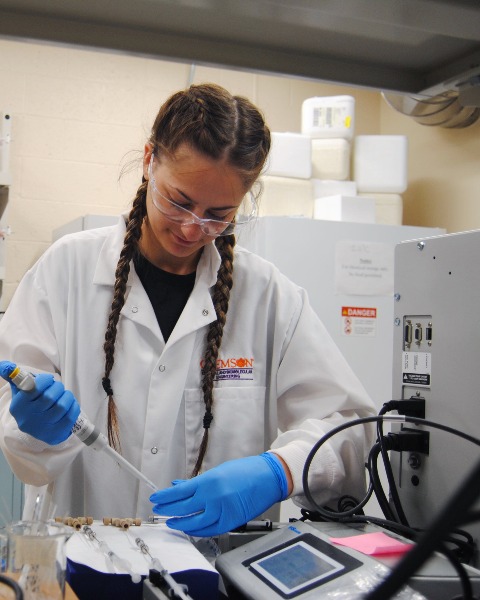Drug Delivery
(I-336) Enhancing mRNA-Based Therapeutic Delivery with Coacervate-Encapsulating Polymersomes

Chlo K. Forenzo (she/her/hers)
PhD Student
Clemson University
Clemson, South Carolina, United States
Jessica Larsen (she/her/hers)
Carol and John Cromer ’63 Family Endowed Associate Professor
Clemson University, United States
Presenting Author(s)
Primary Investigator(s)
Materials and Methods:: A capillary-based microfluidic device was assembled by connecting two chromatography tees with a central square capillary to align two enclosed tapered capillaries for the breakup zone. An oil phase containing dissolved polyethylene glycol-b-poly lactic acid (PEG-PLA) was simultaneously injected with inner and outer aqueous streams to form submicron polymersomes. Polymersome characteristics were optimized through controlling the degree of capillary tapers as well as varying stream flowrates. Polymersomes were collected, resuspended, and characterized through dynamic light scattering (DLS) to determine size and polydispersity index. In addition, we optimized the coacervation of green fluorescent protein (GFP)-coding mRNA and polycation spermine within the same inner aqueous stream composition to facilitate coacervate encapsulation within polymersomes. Turbidity studies using UV/Vis spectroscopy were conducted to determine coacervate stability and the optimal ratio of coacervate components.
Results, Conclusions, and Discussions:: Results and Discussion: Microfluidic synthesis of polymersomes was confirmed via preliminary DLS characterization (Figure 1). The polymersomes were found to have an average size of 306.5 nm +/- 32.6 nm with an average PDI of 0.52 +/- 0.1, which can be further decreased using extrusion. Turbidity studies conducted under the specified inner aqueous stream conditions revealed an optimal concentration of green fluorescent protein-coded mRNA in spermine to ensure desired coacervate size and stability. Given the design of the microfluidic device and the optimized coacervation process, we anticipate the successful encapsulation of mRNA coacervates within polymersomes under optimized inner aqueous conditions. Moreover, the spermine in the coacervates will provide protection to the mRNA, preventing its contact with the oil stream and decreasing mRNA degradation.
Conclusions: Using a capillary-based droplet microfluidics approach, PEG-PLA polymersomes can be formed with an inner aqueous phase that not only offers protection to the encapsulated cargo from harsh, degrading solvents, but additionally provides a novel opportunity to encapsulate mRNA/spermine coacervates which could potentially overcome current delivery limitations for mRNA-based therapeutics. Optimization of coacervate formation under inner aqueous conditions provides evidence for future high encapsulation efficiency and protection from mRNA degradation. Further studies need to be conducted to confirm coacervate-loaded polymersome characteristics and measure encapsulation efficiency. Next steps will involve determining encapsulation efficiency by quantifying the unencapsulated mRNA and confirming mRNA release.
Acknowledgements (Optional): : This work was partially funded through Clemson’s Creative Inquiry Program.
References (Optional): :
